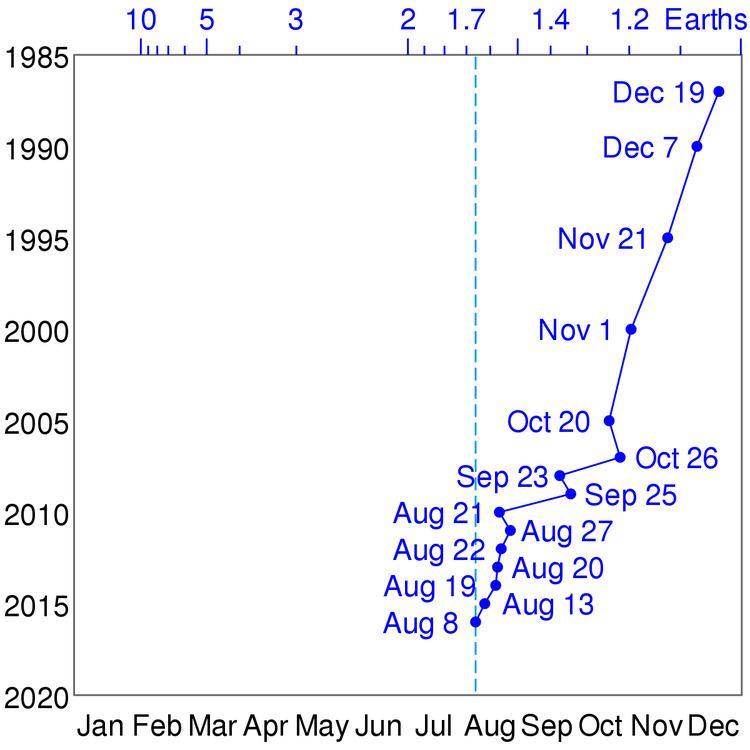1987 December 19 2010 August 21 December 7 2011 | December 19 2010 1990 December 7 2011 August 27 | |
 | ||
Earth Overshoot Day (EOD), previously known as Ecological Debt Day (EDD), is the date on which humanity’s resource consumption for the year exceeds Earth’s capacity to regenerate those resources that year. Earth Overshoot Day is calculated by dividing the world biocapacity (the amount of natural resources generated by Earth that year), by the world ecological footprint (humanity's consumption of Earth’s natural resources for that year), and multiplying by 365, the number of days in one Gregorian common calendar year:
When viewed through an economic perspective, EOD represents the day in which humanity enters an ecological deficit spending. In ecology term Earth Overshoot Day illustrates the level by which human population overshoots its environment.
Earth Overshoot Day is calculated by Global Footprint Network and is a campaign supported by dozens of other nonprofit organizations. Information about Global Footprint Network's calculations and national Ecological Footprints are available online.
Background
Andrew Simms of UK think tank New Economics Foundation originally developed the concept of Earth Overshoot Day. Global Footprint Network, a partner organization of New Economics Foundation, launches a campaign every year for Earth Overshoot Day to raise awareness of Earth’s limited resources. Global Footprint Network measures humanity’s demand for and supply of natural resources and ecological services. Global Footprint Network estimates that in less than eight months, we demand more renewable resources and CO2 sequestration than what the planet can provide for an entire year.
Throughout most of history, humanity has used nature’s resources to build cities and roads, to provide food and create products, and to release carbon dioxide at a rate that was well within Earth’s budget. But by the early 1970s, that critical threshold had been crossed: Human consumption began outstripping what the planet could reproduce. According to Global Footprint Network’s calculations, our demand for renewable ecological resources and the services they provide is now equivalent to that of more than 1.5 Earths. The data shows us on track to require the resources of two planets well before mid-2000-century.
Advocates for Earth Overshoot Day note that the costs of ecological overspending are becoming more evident over time. Climate change — a result of greenhouse gases being emitted faster than they can be absorbed by forests and oceans — is the most obvious result and widespread effects. Other cited effects include: shrinking forests, species loss, fisheries collapse, higher commodity prices and civil unrest.
